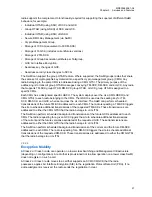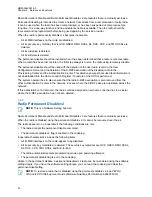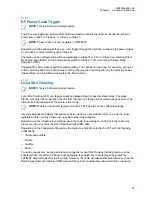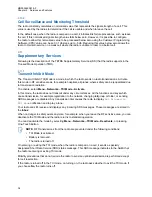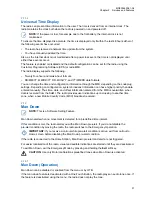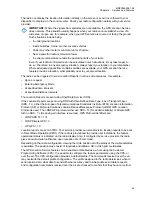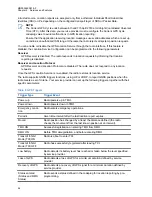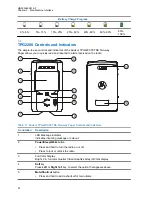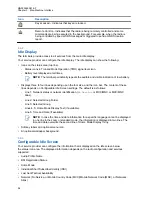
send the same user response for call out alert to a predefined secondary ISSI where the secondary
ISSI is different from the sender.
Without user receipt
The Call-Out mode is ended when the acknowledgment timer runs out, or when you press any key.
Test Call-Out
A special Call-Out alert sent by the dispatcher to test this feature. On receiving the Test Call-Out,
the radio plays a tone and displays
Test Call-Out
. To respond and clear the alert, select
Test OK
.
When you receive the alert, the following responses are available.
•
Accept
– additional information from the dispatcher is displayed.
•
Reject
– display returns to the home display and the talkgroup is set to the one before the Call-Out.
You can address a Call-Out alert by:
• Individual Short Subscriber Identity (ISSI) – to an individual radio.
• Group Short Subscriber Identity (GSSI) – to a group of recipients.
All incoming and outgoing Call-Out messages are stored in
CO Box
(Call-Out Box) and can be
managed through the Man-Machine Interface (MMI). You can protect Call-Out messages from being
deleted or from the overwriting policy of the radio. The overwrite policy deletes the oldest one upon
receipt of a new Call-Out message. When a new Call-Out arrives, the new Call-Out overrides the old
Call-Out, even if it has not been responded. An ongoing Call-Out overrides the old one in any phase
of the Call-Out alert. Also, the overwrite policy deletes unprotected Call-Out messages first before
deleting protected ones.
There is a two-level structure for the alerts. First level is the main alert list, and the second one are all
the messages associated with the alerts. Both lists are displayed chronologically with the newest on
top. The capacity of the
CO Box
is 100 Call-Out alerts and 100 messages (incoming/outgoing). Each
one of the four user profiles has a maximum capacity of 25 Call-Out alerts.
In normal mode, you can browse the
CO Box
and read all the Call-Out messages. In the Call-Out
mode, you can only read the ongoing Call-Out messages.
The Call-Out service functions in two main phases:
Alert Phase
You receive the alert with the associated messages that you can respond to. These messages
provide all the important information about an incident. A special tone is played when the alert is
coming in. The tone volume range is configured in the codeplug and cannot be adjusted through
the MMI. The conditions for stopping this tone are configured in the codeplug (for example, upon
pressing any key). Also, an ongoing alert tone is paused on incoming Call-Out group call. This
alert is resumed once the call ends (if not stopped before). The time-stamp on the Call-Out alert
indicates the time and date when the Call-Out is received.
Information Phase
You are in the Call-Out mode and you may receive more messages about the incident with the
text. You can also query for more information using the Call-Out text function which enables you to
send a text message to the dispatcher host application. You are able to respond to a Call-Out by
selecting a Call-Out template from a list of predefined replies. You may receive more info about the
incident through subsequent text messages.
2.17.1
Call-Out Interactions
Transmit Inhibit Mode
In the transmit inhibit mode, you can receive Call-Out messages. The Call-Out alert message is
displayed on the screen. You have the option to exit TXI Mode or exit the Call-Out prompt. In
MN003465A01-AF
Chapter 2 : Services and Features
41

